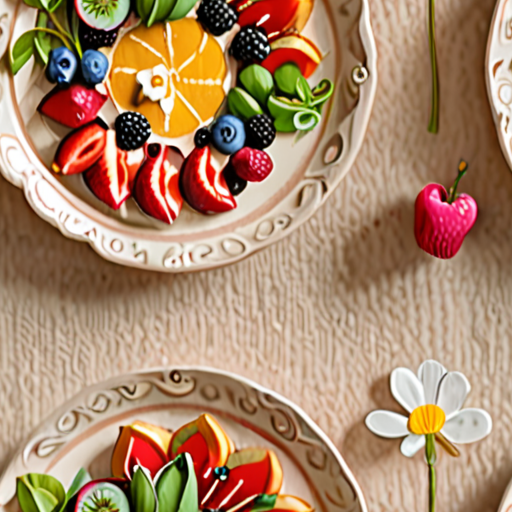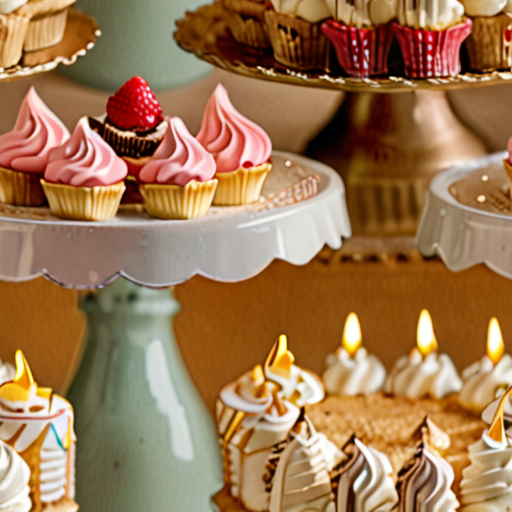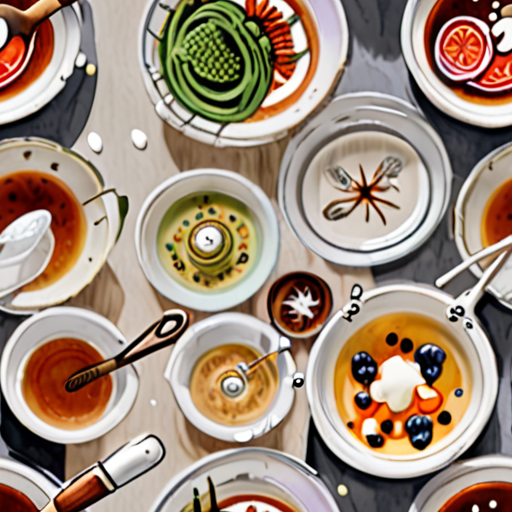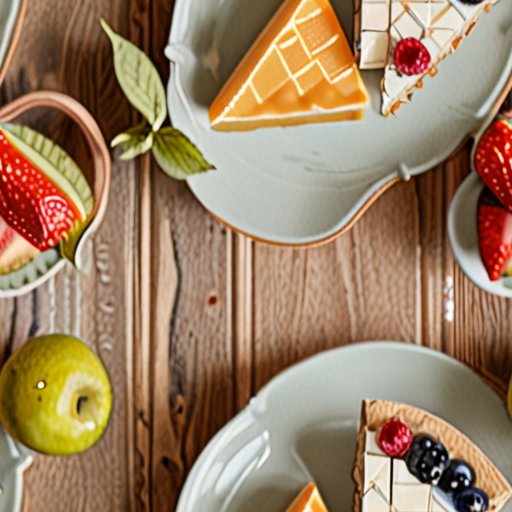Transforming your culinary creations into visually stunning masterpieces requires more than just great taste – it demands a keen eye for food styling at home. Whether you’re a seasoned chef or a passionate home cook, the art of presenting dishes in an appealing way can elevate your cooking experience and make your food stand out from the crowd. By mastering the essential techniques for beautiful plated dishes, you’ll unlock a world of creative possibilities and take your cooking to new heights.

Example of Food Styling
Food styling is an art form that involves arranging and presenting food in a visually appealing way to capture the attention of diners and photographers alike.
- One example of food styling is creating a still life composition with fresh fruits and vegetables, such as arranging sliced apples and pears in a decorative pattern on a wooden cutting board.
- Another example is styling a dish with garnishes, such as sprinkling chopped herbs or edible flowers over a salad or soup to add color and fragrance.
- A third example is creating a dramatic presentation with bold colors and textures, such as stacking slices of juicy meats or cheeses on a platter to create a visually striking display.
- Finally, food stylists may also use props and backdrops to create a themed setting, such as arranging a picnic-style spread on a blanket or using a vintage tablecloth to evoke a sense of nostalgia.
Tips for Effective Food Styling
- Choose ingredients that are visually appealing and have interesting textures and colors.
- Pay attention to lighting and use natural light whenever possible to bring out the best in your subject.
- Experiment with different compositions and arrangements to find the most visually appealing way to present your food.
- Don’t be afraid to get creative and try new things – food styling is all about experimentation and having fun!
Best Practices for Food Styling
When it comes to food styling, there are several best practices to keep in mind:
- Keep it simple and don’t over-accessorize – sometimes less is more when it comes to food styling.
- Use high-quality ingredients that are fresh and visually appealing.
- Pay attention to texture and mix different textures to add interest to your composition.
- Consider the theme and atmosphere you want to create and choose props and backdrops accordingly.
Getting Started with Food Styling
If you’re interested in trying your hand at food styling, here are a few tips to get you started:
- Start by experimenting with different ingredients and compositions to find what works best for you.
- Practice makes perfect – don’t be discouraged if your early attempts don’t turn out as expected.
- Take inspiration from professional food stylists and photographers to learn new techniques and ideas.
- Most importantly, have fun and enjoy the process of creating something beautiful and delicious!
One Rule a Food Stylist Must Follow
A crucial aspect of food styling is maintaining the temperature of dishes to ensure food safety and prevent foodborne illnesses.
- Hot food must remain hot, typically between 145°F and 165°F (63°C and 74°C), to prevent bacterial growth and contamination.
- Cold food must stay cold, usually below 40°F (4°C), to prevent the growth of harmful bacteria and other microorganisms.
- This rule applies to all types of food, including meats, dairy products, fruits, and vegetables.
- Failing to maintain proper temperatures can lead to food spoilage, food poisoning, and other health issues.
As a food enthusiast and chef, I understand the importance of following this rule to ensure the quality and safety of our dishes at Memories Restaurant.
We take pride in serving delicious and safe meals to our customers, and we adhere to strict guidelines to maintain the highest standards of food handling and preparation.
By prioritizing food safety and temperature control, we can provide our guests with an exceptional dining experience and build trust in our brand.

Top Homemade Food Items That Sell Well
We’ve compiled a list of popular homemade food items that consistently sell well, helping you kick-start your home-based business.
-
Baked Goods
- Cookies: Classic chocolate chip cookies, oatmeal raisin cookies, and peanut butter cookies are always in demand.
- Cakes: Moist vanilla cakes, decadent chocolate cakes, and flavorful carrot cakes are perfect for special occasions.
- Muffins: Blueberry muffins, banana muffins, and cinnamon apple muffins are great breakfast or snack options.
-
Savory Delights
- Pizza: Homemade pizza dough topped with a variety of ingredients like pepperoni, mushrooms, and olives is a crowd-pleaser.
- Quiches: Savory quiches filled with cheese, ham, and vegetables are perfect for brunch or dinner.
- Empanadas: Meat-filled empanadas, vegetable empanadas, and cheese empanadas are delicious snacks or light meals.
-
Desserts
- Fudge: Rich chocolate fudge, peanut butter fudge, and rocky road fudge are sweet treats that sell well.
- Candies: Handmade candies like caramels, toffees, and marshmallows are perfect for gift-giving or snacking.
- Ice Cream: Unique flavors like matcha green tea, strawberry balsamic, and salted caramel ice cream are always in demand.
-
Snacks
- Nuts: Roasted nuts like almonds, cashews, and pecans are crunchy snacks that pair well with beverages.
- Popcorn: Gourmet popcorn flavors like truffle parmesan, sriracha lime, and dill pickle are addictive snacks.
- Trail Mix: Customizable trail mix blends featuring nuts, seeds, and dried fruits are healthy snack options.
At Memories Restaurant, we understand the importance of quality ingredients and presentation in making our homemade food items stand out. By focusing on these key aspects, you can increase sales and build a loyal customer base for your home-based business.

Keeping Hair Out of Food at Home
I’ve learned that long hair can be a nuisance in the kitchen, especially when cooking or baking.
- One solution I’ve found effective is to wear my hair up in a bun. This helps prevent stray hairs from falling into my food.
- Even with a tight ponytail, hair can still find its way into my dishes. A bun seems to keep it contained better.
- Another benefit of wearing my hair up is that it keeps me cooler while cooking.
When cooking, it’s essential to have a clean workspace and tools to prevent cross-contamination and ensure food safety.
- Cover your hair with a hat or bandana to catch any loose strands.
- Wash your hands frequently, especially before handling food.
- Keep your kitchen counters and utensils clean and sanitized.
By implementing these simple habits, you can enjoy cooking and baking without worrying about hair getting in the way.
Tips for Keeping Hair Out of Food
- Use a hair tie or elastic band to secure your hair back.
- Try a hairnet or cap to cover your hair while cooking.
- Keep your hair tied back with a scarf or bandana.
Additional Tips for Kitchen Safety
- Always wash your hands before handling food.
- Make sure your kitchen utensils and equipment are clean and sanitized.
- Keep your kitchen countertops clean and clutter-free.
Keeping Hair Out of Food
We understand the importance of maintaining cleanliness and hygiene in our kitchens, which is why we want to share some effective ways chefs keep hair out of food.
- Chef Hats: A well-fitting chef hat can go a long way in preventing stray hairs from falling into food. Our chef hats come in various styles, including the classic toque hat, which is often worn by senior chefs in the kitchen.
- Hairnets: Hairnets are a popular choice among chefs who need to keep their hair completely contained while cooking. They are easy to wear and can be adjusted to fit different head sizes.
- Bonnet Style Chef Hats: Bonnet style chef hats have a longer design that covers the neck and chin area, providing extra protection against loose hairs.
- Tie Backs: Some chefs prefer to tie their hair back using a simple elastic band or a hair tie. This method works well for those with shorter hair lengths.
- Hairstyles: Certain hairstyles, such as buns or ponytails, can also help keep hair away from food. These styles are particularly useful for chefs who work with hot equipment or in fast-paced environments.
At Memories Restaurant , we take pride in maintaining high standards of cleanliness and hygiene in our kitchens. By implementing these simple yet effective methods, our chefs can ensure that every dish served meets our exceptional quality standards.
For more information on how to maintain a clean and hygienic kitchen, visit our Kitchen Hygiene Tips page.
Additionally, you may find our Chef Hats and Uniforms guide helpful in selecting the perfect attire for your kitchen staff.
Remember, a clean kitchen is a safe kitchen! By prioritizing cleanliness and hygiene, you can ensure a positive dining experience for your customers.

Is Hair in Food a Health Code Violation?
At Memories Restaurant, we take food safety very seriously, and one common concern our customers have is finding hair in their food.
- Hair can be a significant issue in the kitchen, particularly if staff members are not wearing proper hair restraints or if these restraints are not maintained correctly.
- According to state food safety regulations, restaurants are required to maintain a clean and sanitary environment, which includes preventing hair from entering food products.
We understand that finding hair in food can be unpleasant and may lead to customer dissatisfaction. To prevent this from happening, we follow strict guidelines to ensure our kitchen staff wears proper hair restraints, such as hats or nets, at all times during food preparation and service.
- We train our staff on the importance of maintaining personal hygiene and adhering to food safety protocols.
- We regularly inspect our kitchen equipment and utensils to ensure they are clean and sanitized.
- We implement a robust cleaning schedule to maintain a clean and hygienic environment in our kitchen.
While hair in food is a serious issue, it is essential to note that it is not always a health code violation. However, failure to adhere to proper food safety protocols and maintain a clean environment can lead to more severe consequences, including fines and damage to our reputation.
To minimize the risk of hair contamination, we encourage our customers to report any concerns or issues they encounter during their visit. We take all complaints seriously and investigate them promptly to ensure our high standards of food safety are met.
Conclusion:
At Memories Restaurant, we prioritize food safety and strive to maintain the highest standards in our kitchen. By following strict guidelines, training our staff, and implementing regular cleaning schedules, we aim to prevent hair contamination and ensure our customers enjoy a safe and enjoyable dining experience.

0 Comments